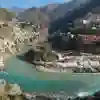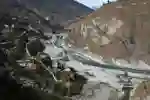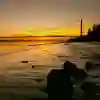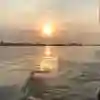Waves of Sediment
Addressing SUPERSLUG legacies in the Himalayas

Project summary
The Challenge
Natural disasters involving catastrophic sediment-rich flows (SRFs) leave a legacy of destruction and are becoming more prevalent
The Approach
Using field and satellite data, along with numerical models to understand the behavior of post-SRF ‘superslugs’ and explore mitigation strategies
The Outcome
Influencing future policies and strategies for improved SRF-legacy management could reduce injuries, death and material damage following future events
Institutes and centres

From a bird's to a worm's-eye view
Our new insights will help understand and reduce the impacts of future natural disasters like avalanches, landslides and flash flood events.
The Challenge
Natural disasters in mountain landscapes, such as landslides, rock-ice avalanches and glacial lake outburst floods, are examples of catastrophic sediment-rich flows (SRFs). Whilst flood waters can cause damage, sediment rich flows can choke channels, moving car and house sized boulders down mountain river channels. They are expected to become more frequent due to global warming and they often have the greatest effect on vulnerable communities and assets in the least developed countries.
SRFs are often composed of vast quantities of sediment, which may blanket valley floors to depths of tens of metres. After the initial event, the subsequent re-working and transport of these sediments by rivers can generate large-scale waves of sediment or 'superslugs', which are a so-called 'legacy' impact of an SRF. These superslugs can affect:
- flood risk – for example by altering the river bed elevation of an existing channel
- infrastructure – for example by scouring bridge footings and damaging hydropower turbines
- water quality – for example, reducing water and energy security.
Such legacy impacts are poorly understood, and improving our understanding of these impacts is of vital importance if strategies are to be introduced.
The full research team
-
Prof Tom Coulthard, University of Hull project lead
-
Dr MJ Westoby, University of Plymouth Project Lead
-
Dr Georgie Bennett, University of Exeter Project Lead
-
Professor Jonathan Carrivick, University of Leeds Project Lead
-
Dr Stuart Dunning, Newcastle University, Newcastle University Project Lead
The Approach
The SUPERSLUG project team have come together to measure the landscape legacies of catastrophic SRFs. The project will focus on an area in the Indian Himalayas, spanning over 150 km, that recently experienced a catastrophic SRF; the so-called 'Chamoli disaster'. This region arguably represents the most data-rich landscape of its type globally and sits within an otherwise extremely data-poor region.
The team will delve into the evolution and impacts of sediment superslugs by:
- Using drone observations and satellite remote sensing to create both a base and an evolving picture of the SRF-affected system
- Introducing innovative wireless 'smart' cobbles, complemented with passive seismics to directly measure the motion of the displaced material through affected river channels
- Developing an open-source toolkit for detecting and tracking fine-grained superslugs using cloud-based processing of free satellite imagery.
The data and toolkit created in work packages 1-3 will be used to create a new calibrated model, which will be a form of 'digital twin' for the Chamoli disaster catchment area. It will represent the largest model of its kind and will be used to explore catchment management decisions for mitigating the worst superslug impacts.
The team will engage closely with individuals and organisations, including governance and disaster management professionals, hydropower operators and the wider international academic community in order to translate the project findings into practical outcomes and impacts.
The Impact
The digital twin created by the SUPERSLUG team will bring unprecedented opportunities to explore mitigation strategies for these increasingly prevalent natural disasters. By engaging closely with professionals working to mitigate impacts of the Chamoli disaster, and other SRF events past and future, the team expect to influence future policies and strategies for SRF-legacy management.
In order to increase the awareness of the project’s findings, the team will host an end-of-project ‘horizon-scanning’ workshop. This will benefit the wider research and innovation community by setting the future research agenda. The team will also submit a proposal for a 2026 Royal Society Summer Science Exhibition exhibit on the changing global nature of mountain geohazards.





